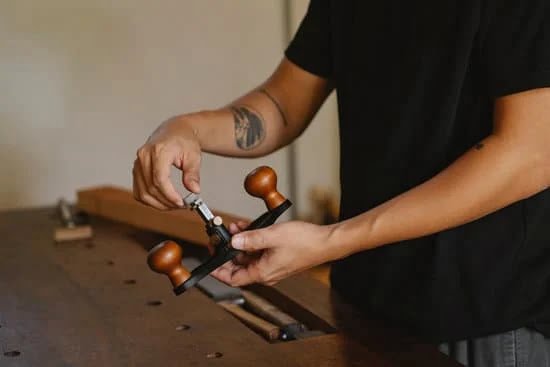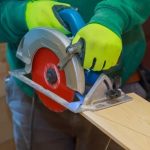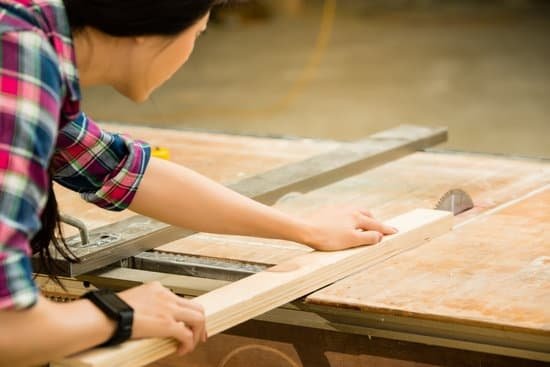Building a woodworking spray booth is an essential step for any craftsman looking to achieve professional-quality finishes. Whether you are a seasoned woodworker or just starting out, having a dedicated space for spraying finishes can greatly enhance the quality and efficiency of your work. In this article, we will guide you through the process of building your own woodworking spray booth, from planning and designing to setting up lighting and ventilation systems.
A woodworking spray booth offers numerous benefits that make it an indispensable addition to any workshop. First and foremost, it provides a controlled environment for applying finishes. By containing overspray and maintaining proper airflow, a spray booth ensures that your finishes dry smoothly without dust or debris interfering with the surface. Having a dedicated space for spraying also helps reduce contamination from other elements in your workshop, such as sawdust or leftover paint particles.
When planning and designing your woodworking spray booth, several factors need to be taken into consideration. You’ll need to determine the size and location of the booth within your workshop while considering ventilation, lighting, and electrical requirements. It’s important to choose materials that are both durable and easy to clean. Additionally, gathering all the necessary materials, tools, and safety equipment is crucial to ensure a safe working environment.
In the following sections of this article, we will guide you step-by-step through the process of building your own woodworking spray booth. From constructing the frame and walls to installing ventilation systems and filters, we will provide detailed instructions on each stage of the construction process. We will also cover important topics such as incorporating safety measures and fire prevention techniques.
By following our comprehensive guide, you will be able to build a well-designed woodworking spray booth that meets all your needs and helps you achieve professional finishes in every project. So let’s get started on creating a dedicated space where you can hone your craftmanship skills with confidence.
Planning and Designing the Woodworking Spray Booth
When it comes to building a woodworking spray booth, careful planning and designing are essential to create a functional and efficient workspace. This section will guide you through the process of determining the size and location of your spray booth, considering ventilation, lighting, and electrical requirements, as well as discussing potential materials and tools needed for construction.
Firstly, it is important to determine the appropriate size and location for your woodworking spray booth within your workshop. Consider the size of the projects you typically work on and ensure that there is sufficient space around the booth for easy maneuverability. You may also want to consider factors such as access to power sources, natural light sources, or proximity to other equipment or workstations.
Ventilation is a crucial aspect of any woodworking spray booth. Proper air circulation ensures a safe working environment by eliminating harmful fumes and reducing dust buildup. Determine whether you will need an exhaust system that vents air outside or if a recirculating system with filters will be adequate for your needs.
Lighting is another important consideration when designing your spray booth. Sufficient lighting is vital for proper visibility during spray finishing. Natural light can be beneficial but should be supplemented with artificial lighting to ensure consistent illumination throughout the space.
Lastly, consider the electrical requirements for your woodworking spray booth. Depending on your chosen ventilation system, you may need additional electrical outlets or even wiring dedicated solely to powering the booth’s components. It is crucial to consult with an electrician who can provide guidance specific to your workshop’s setup and safety standards.
Once you have determined these key aspects of planning and designing your woodworking spray booth, you can move forward with gathering materials and tools necessary for its construction.
Gathering the Necessary Materials and Tools
One of the key steps in building a woodworking spray booth is gathering all the necessary materials and tools. This section will provide a comprehensive list of everything you need for the construction process, including materials, tools, and additional safety equipment.
To start with, here is a list of materials required for building a woodworking spray booth:
- Lumber or metal studs for constructing the frame.
- Plywood or drywall for creating the walls.
- Screws or nails for attaching the walls to the frame.
- Hinges and door hardware for installing a door.
- Ventilation ducts and fittings for creating an air circulation system.
- Filters for effective filtration and dust containment.
- Electrical wiring, outlets, and light fixtures for lighting and electrical requirements.
- Fire-resistant materials such as fire-rated drywall or fire retardant coatings.
In addition to the materials, there are specific tools and equipment that you’ll need:
- Tape measure, level, and square for precise measurements and alignment.
- Circular saw or miter saw for cutting lumber or plywood.
- Power drill or screwdriver for fastening screws or nails.
- Hammer or nail gun (if using nails) for attaching the walls to the frame.
- Screwdriver set or drill bits for installing hinges and door hardware.
- Ductwork tools (such as tin snips) for cutting ventilation ducts if needed.
- Safety gear including gloves, safety glasses, respirator mask, and ear protection.
Lastly, it’s crucial to prioritize safety when working with potentially hazardous materials and equipment in a woodworking spray booth. Here are some additional safety equipment you should consider having:
- Fire extinguisher: Keep a fire extinguisher nearby in case of emergencies.
- First aid kit: Have a well-stocked first aid kit within easy reach in case of injuries.
- Respirator mask: Protect your lungs from fumes and particles while working with finishes.
- Protective clothing: Wear smock, coveralls, or apron to protect your clothes from stains and finishes.
- Fire suppression system: Depending on the size of your spray booth, you may want to consider installing a fire suppression system for added safety.
By gathering all the necessary materials, tools, and safety equipment before starting the construction process, you can ensure a smooth and efficient build of your woodworking spray booth. Don’t forget to wear appropriate protective gear during construction and follow safety guidelines throughout the process.
Building the Frame and Walls of the Woodworking Spray Booth
One of the crucial steps in building a woodworking spray booth is constructing the frame and walls. This section will provide step-by-step instructions for building a sturdy frame and attaching the walls to create a solid structure. Additionally, tips on reinforcing the booth for added stability and longevity will be discussed.
Constructing the Frame
The first step in building the woodworking spray booth is constructing a sturdy frame. The frame can be made using either lumber or metal studs, depending on personal preference and the specific requirements of your workshop.
To build the frame using lumber, start by measuring and cutting the lumber pieces according to the desired dimensions of your spray booth. Use a miter saw or circular saw to make accurate cuts. Next, assemble the framework by attaching the pieces together using screws or nails. Ensure that all joints are secure and level to provide stability for the structure.
If opting for a metal stud frame, measure and cut metal studs using aviation snips or metal shears. Metal studs are lightweight and easy to work with, making them an attractive option for constructing the frame. Connect the metal studs together using stud screws or self-tapping screws specifically designed for metal framing.
Attaching Plywood or Drywall
Once you have built the frame, it’s time to attach plywood or drywall to create solid walls for your woodworking spray booth. Measure and cut these materials based on the dimensions of each wall panel required.
If choosing plywood, use a table saw or circular saw to make clean cuts. Attach the plywood panels to the frame using wood screws or nails. Make sure each panel is securely fastened to prevent any movement during spraying activities.
Alternatively, you can opt for drywall which offers a smooth finish suitable for spraying finishes. Cut drywall panels with a utility knife or drywall saw and attach them to the frame using drywall screws. Take care not to over-tighten the screws, as this can cause the drywall to crack.
Reinforcing the Structure
To ensure added stability and longevity of the woodworking spray booth, it is essential to reinforce the structure. Additional reinforcements may include installing cross-bracing between vertical supports or adding corner braces to strengthen the corners of the booth. Use brackets, screws, or nails to secure these reinforcements in place.
Furthermore, consider reinforcing any areas where equipment will be attached such as exhaust fans or lighting fixtures. This will help prevent sagging or movement that could compromise the overall structural integrity of the booth.
By following these steps for building the frame and walls of your woodworking spray booth, you can create a sturdy and stable structure that will provide a safe and efficient workspace for all your spray finishing projects.
Installing Ventilation System and Filters
Proper ventilation is a crucial component of a woodworking spray booth, as it ensures the circulation of clean air and the removal of hazardous fumes. In this section, we will guide you through the process of installing a ventilation system for your spray booth, as well as help you choose the appropriate filters for effective filtration and dust containment.
First, determine whether you want to opt for a ducted or non-ducted ventilation system. Ducted systems remove airborne contaminants by effectively capturing them at the source and exhausting them outside the workshop. On the other hand, non-ducted systems recirculate air within the booth using filters that remove contaminants before returning clean air back into the space.
Next, carefully plan the positioning of your ventilation system. Ideally, it should be located near your spraying area to capture overspray immediately after application. Additionally, take into consideration any local building codes or regulations regarding exhaust locations.
When it comes to choosing filters for your woodworking spray booth, there are various types available depending on your specific needs. Particulate filters capture dust particles and prevent them from reentering the workspace. In addition to particulate filters, chemical filters are essential for capturing harmful fumes generated during spraying processes. Activated carbon filters are commonly used to eliminate odors and volatile organic compounds (VOCs) from the air.
It is important to regularly inspect and clean both your ventilation system and filters to ensure their optimal performance. Replace filters when necessary, following manufacturer recommendations for frequency of replacement. By properly maintaining these components, you can promote a safe working environment with good airflow and minimal exposure to hazardous substances.
Setting up Lighting and Electrical Requirements
When setting up a woodworking spray booth, it is crucial to consider the lighting and electrical requirements to ensure a safe and efficient working environment. Proper visibility is essential for achieving high-quality finishes, while understanding electrical needs helps prevent accidents and ensures smooth operation. In this section, we will provide guidelines on installing adequate lighting, discuss necessary electrical requirements, and offer tips for optimizing functionality.
To ensure optimum visibility in your woodworking spray booth, it is recommended to have uniform lighting that minimizes shadows. Fluorescent lights are commonly used due to their even distribution of light. When positioning light fixtures, it is important to place them strategically so that they do not interfere with the spraying process or cast shadows on the workpiece. Additionally, opting for fixtures with protective covers can help prevent dust accumulation on the bulbs.
Understanding electrical requirements is also crucial when setting up a woodworking spray booth. It is essential to have sufficient electrical outlets available for powering equipment such as fans, air compressors, and other tools necessary for spray finishing. When working with electricity in the spray booth, safety should be a priority. Ensure all electrical connections are properly grounded and protected from potential hazards such as overspray or liquids.
In terms of safety precautions, it is advisable to use Ground Fault Circuit Interrupter (GFCI) outlets in areas where there may be exposure to moisture or liquids. This type of outlet automatically shuts off power in case of an electrical fault, reducing the risk of electric shock or fire. Additionally, keeping cords organized and away from walkways will minimize tripping hazards within the spray booth.
By following proper lighting techniques and understanding electrical requirements, woodworkers can create a well-lit and functional woodworking spray booth that enhances their craftsmanship. Investing time in planning and implementing these aspects will result in improved visibility during spraying processes and increased safety for both equipment and personnel.
| Recommended Lighting Fixtures | Electrical Safety Tips |
|---|---|
| – Fluorescent lights for even distribution of light | – Use GFCI outlets in areas exposed to moisture or liquids |
| – Position fixtures strategically to avoid shadows and interference with spraying process | – Ground all electrical connections properly |
| – Opt for fixtures with protective covers to prevent dust accumulation on bulbs | – Keep cords organized and away from walkways to minimize tripping hazards |
Incorporating Safety Measures and Fire Prevention
Importance of Safety Precautions
When working with flammable finishes and sprays, it is crucial to prioritize safety measures to ensure a secure working environment within your woodworking spray booth. Wearing appropriate protective gear, such as goggles, a mask, and gloves, is essential to prevent any harm or injury. In addition to personal protective equipment (PPE), it is recommended to have a fire extinguisher readily available in case of emergencies.
Safety Measures for Working with Flammable Materials
Working with flammable finishes requires extra caution and adherence to specific safety measures. It is important to avoid smoking or using any open flames inside the spray booth area. Ensure that all electrical equipment used within the spray booth are rated for explosive atmospheres and comply with local regulations regarding their installation.
It is advisable to thoroughly read the material safety data sheets (MSDS) provided by the manufacturers of the finishing products you are using. These sheets contain important information on handling and storage requirements, as well as potential hazards associated with the products.
Fire Prevention Tips
To prevent fires within your woodworking spray booth, take proactive measures to minimize risk. Store finishing materials properly in designated containers away from heat sources or potential ignition points. Keep all electrical wiring and components safely secured and regularly inspected for any damage or wear.
Regularly clean and maintain your ventilation system to reduce the buildup of flammable dust particles that could ignite. Implement strict cleaning schedules not only for the ventilation system but also for the entire workspace, removing any wood debris or sawdust that may pose a fire hazard.
Lastly, if ever faced with a fire emergency while using your woodworking spray booth, remember to stay calm and safely evacuate the area immediately. Contact emergency services right away and avoid attempting to put out large fires without professional assistance.
By following these safety protocols and taking necessary precautions, you can enjoy peace of mind while using your woodworking spray booth and ensure the safety of both yourself and your workspace.
Using and Maintaining the Woodworking Spray Booth
Once you have built your woodworking spray booth, it is important to understand how to use and maintain it properly. This section will provide you with guidelines on using the spray booth effectively and ensuring its longevity.
To begin, it is essential to prepare your materials before applying finishes in the spray booth. Make sure that your workpieces are clean and free of any dust or debris. It is also recommended to sand them down to a smooth surface before spraying. Additionally, be sure to wear appropriate protective gear such as goggles, gloves, and a respirator when working with finishes that emit fumes or contain hazardous chemicals.
When applying finishes in the spray booth, follow the manufacturer’s instructions carefully. Maintain an even distance between the sprayer and the workpiece to ensure an even application. Be mindful of overspray and avoid excessive buildup on your workpiece as this can affect the overall finish quality.
After you have finished spraying, it is important to clean your equipment promptly. Clean out the spray gun thoroughly by following the manufacturer’s instructions for disassembly and cleaning. Dispose of any used finishing materials properly according to local regulations.
Regular maintenance of the woodworking spray booth is crucial for its efficiency and effectiveness. One key aspect of maintenance is replacing filters regularly to ensure proper air circulation and filtration of particles. Check the airflow regularly by monitoring the pressure gauge if installed, or by using smoke or tissue paper near intake vents to check for adequate suction.
In addition, keep your workspace organized by storing finishing materials in designated areas within the spray booth. This ensures easy access while minimizing clutter that could impede workflow or create safety hazards.
By following these guidelines for using and maintaining your woodworking spray booth, you can enjoy optimal results from your finishes while prolonging the lifespan of your booth. Remember to always prioritize safety and take precautionary measures when working with finishes that pose potential health risks or fire hazards.
Ensure that you read and understand the manufacturer’s instructions for any finishing products you use and follow them closely. With proper care and maintenance, your woodworking spray booth will provide you with a dedicated space for professional-quality finishes for years to come.
Conclusion
In conclusion, building a well-designed woodworking spray booth can greatly enhance the quality and efficiency of your craftsmanship. By having a dedicated space for spraying finishes, you can achieve professional-level results while minimizing the risk of accidents and contamination.
Having followed the steps outlined in this article, you now have the knowledge and guidance to create your own woodworking spray booth. By carefully planning and designing the booth, gathering the necessary materials and tools, constructing a sturdy frame, installing a proper ventilation system and filters, setting up appropriate lighting and electrical requirements, incorporating safety measures, and regularly maintaining the booth, you can ensure its longevity and optimal functionality.
The benefits of owning a woodworking spray booth are multifaceted. Not only will it provide you with a controlled environment for precise finishing work, but it will also protect both your health and your workspace from harmful fumes and dust particles. Additionally, by adhering to safety precautions and organizing your spray booth effectively, you can greatly reduce the risk of accidents.
In order to fully enjoy these benefits, it is important to remember that safety should always be prioritized. Wearing appropriate protective gear, using fire suppression equipment, following safety measures when working with flammable finishes or sprays, along with regular maintenance tasks such as replacing filters and checking ventilation are all essential in ensuring a safe working environment.
By implementing these steps and guidelines provided in this article when constructing your woodworking spray booth, you can take your craftsmanship to new heights while enjoying a safe and efficient workspace. Invest your time into designing an ideal spray booth for your needs, follow through with cautionary measures during its usage, perform regular maintenance tasks diligently – these actions will guarantee not only satisfying woodworking experience but also optimized longevity of your spray booth.
Remember: creating a well-built woodworking spray booth is an investment towards achieving professional-quality finishes safely and efficiently.
Frequently Asked Questions
Can you make a spray booth out of wood?
Yes, it is possible to make a spray booth out of wood. However, there are certain considerations that need to be taken into account when doing so. Firstly, the wood used should be resistant to chemicals and fire. Plywood or MDF (medium-density fiberboard) are often good choices for constructing the walls and panels of the booth.
The interior surfaces should be smooth and easy to clean to prevent any particle buildup that could contaminate the paintwork. Proper ventilation must also be established to remove fumes and maintain air quality within the booth. This can be achieved by incorporating an exhaust fan system with adequate airflow to ensure proper ventilation while preventing potential fire hazards associated with spraying flammable substances.
How do you make a spray paint booth?
To create a spray paint booth, there are several key steps that need to be followed. Firstly, choose a location for your booth, ensuring it has enough space for your work area as well as sufficient ventilation options. Construct a frame using materials such as PVC pipes or metal tubing, creating a structure that will support the plastic sheeting or tarp used for enclosing the booth.
It is crucial to ensure that all joints are securely fastened to provide stability during use. Apply the chosen enclosure material tightly over the frame, leaving no gaps or loose areas where spray particles can escape. Finally, install an exhaust fan system capable of effectively venting fumes and overspray from within the booth, providing a safe working environment.
How do you make a dust free spray booth?
Creating a dust-free spray booth requires specific measures to minimize airborne particles that could affect paint application quality and finish. Start by selecting appropriate materials for construction; non-porous options such as acrylic sheets or PVC panels help reduce dust accumulation compared to porous materials like fabrics or curtains. Next, establish proper airflow utilizing an efficient exhaust fan system specifically designed for dust extraction in addition to using high-quality filters capable of capturing fine particles effectively. Regularly clean these filters according to instructions provided by manufacturers to maintain their effectiveness.
To further prevent dust contamination, consider implementing a cleanroom-like environment with positive air pressure, where incoming filtered air displaces any contamination that could potentially disrupt paintwork. Additionally, thorough cleaning of the booth before every painting job is essential to remove any pre-existing dust and debris. Prioritize dampness or anti-static treatments on relevant surfaces to reduce potential friction that can generate particles. By diligently following these measures, a relatively dust-free spray booth can be established for optimal painting results.

Hi everyone! I’m a woodworker and blogger, and this is my woodworking blog. In my blog, I share tips and tricks for woodworkers of all skill levels, as well as project ideas that you can try yourself.





